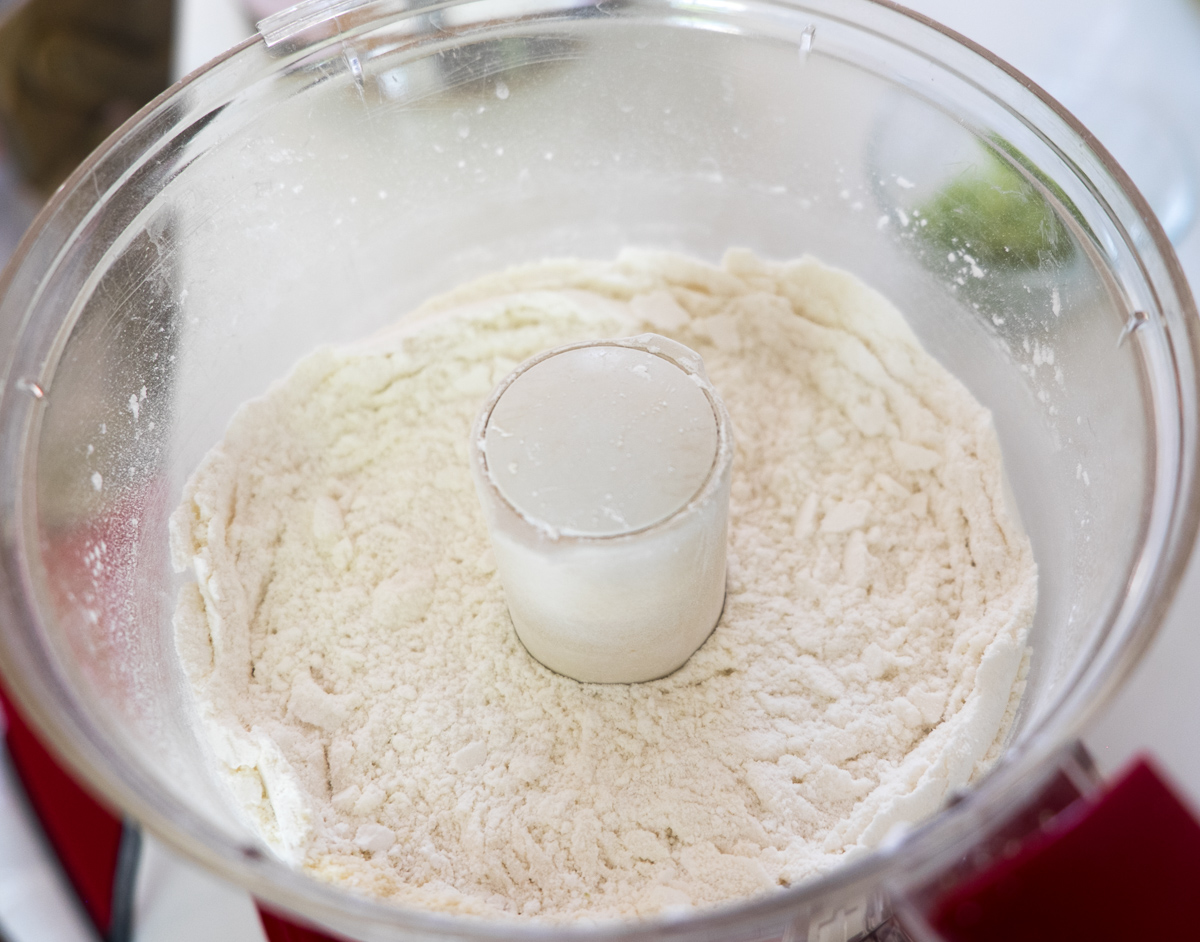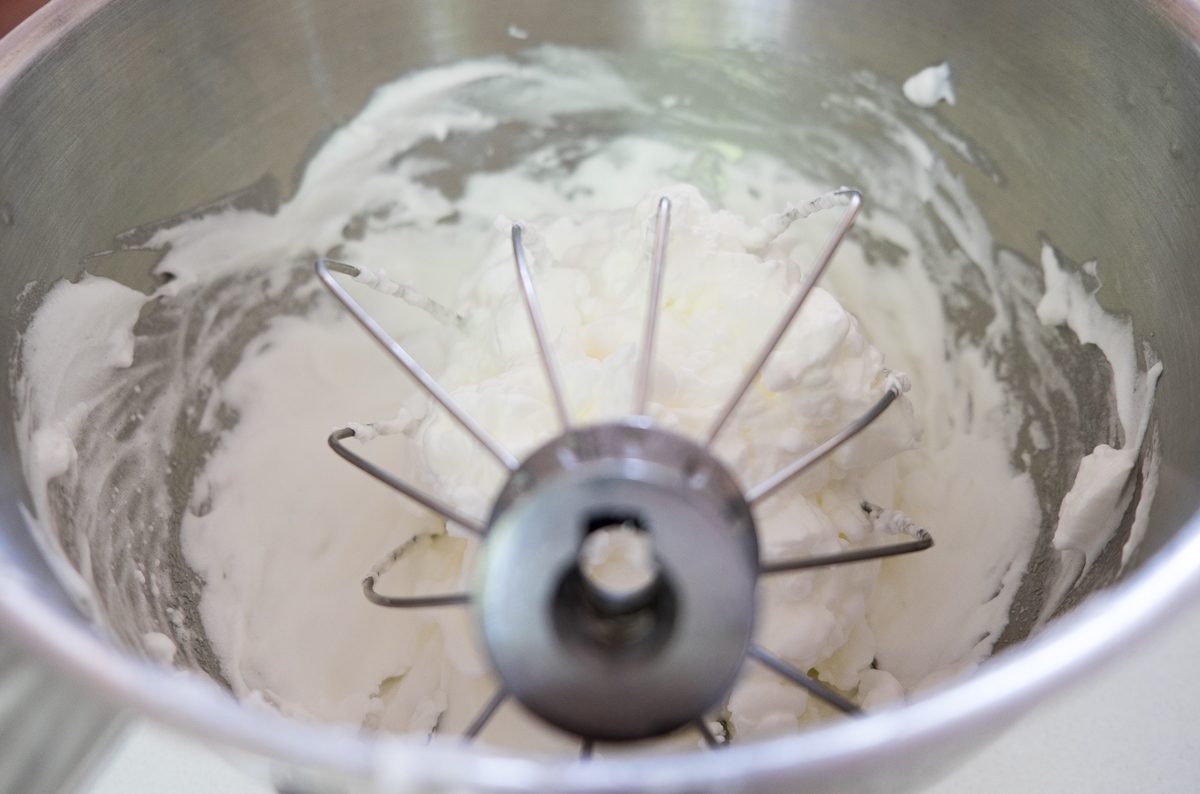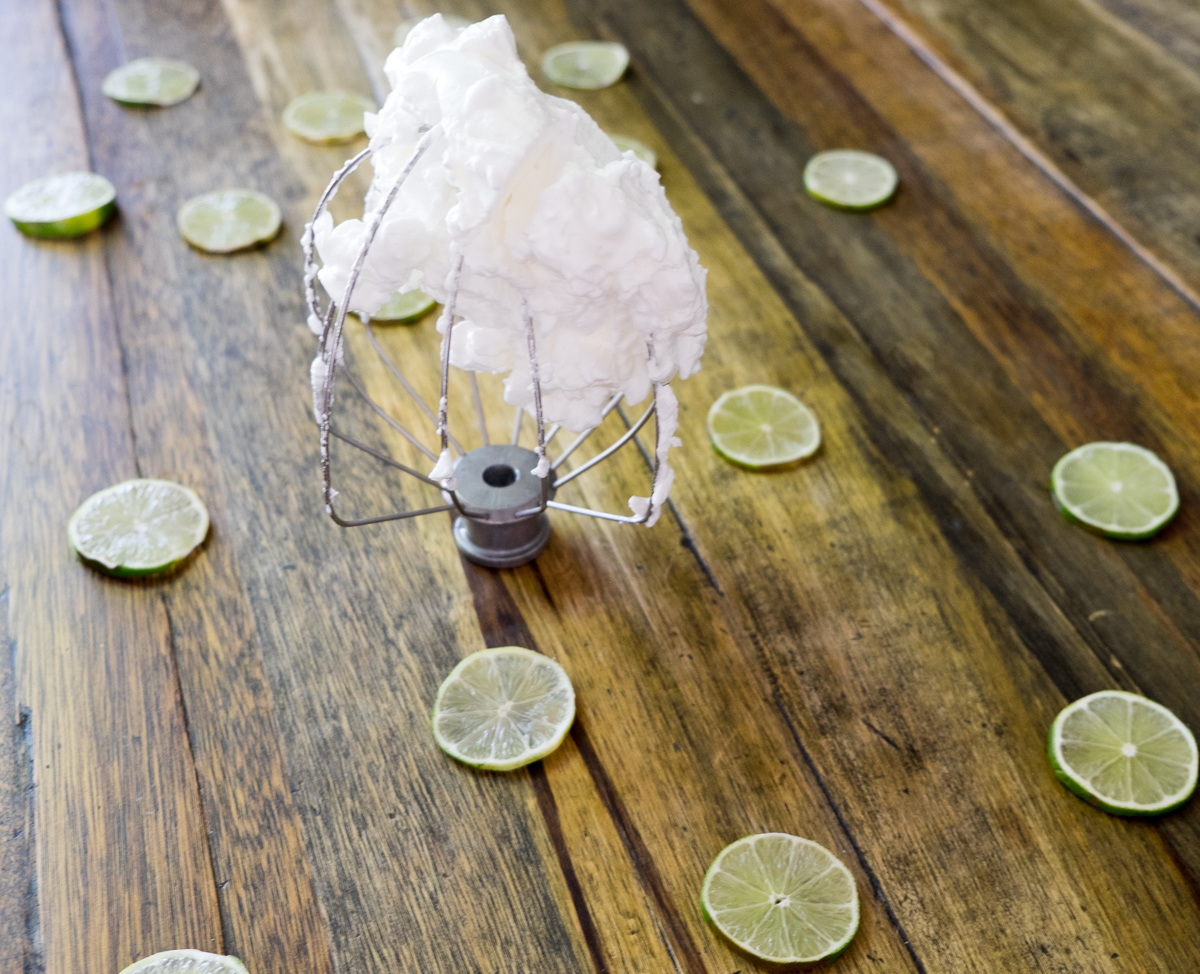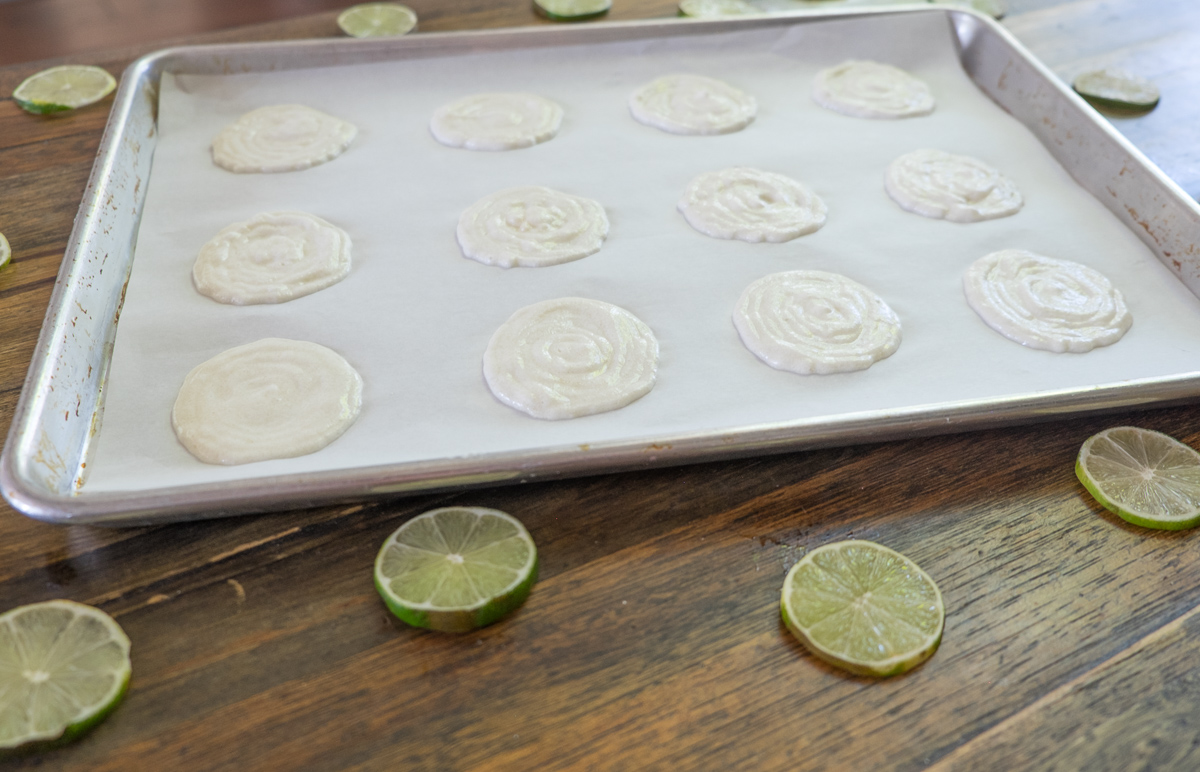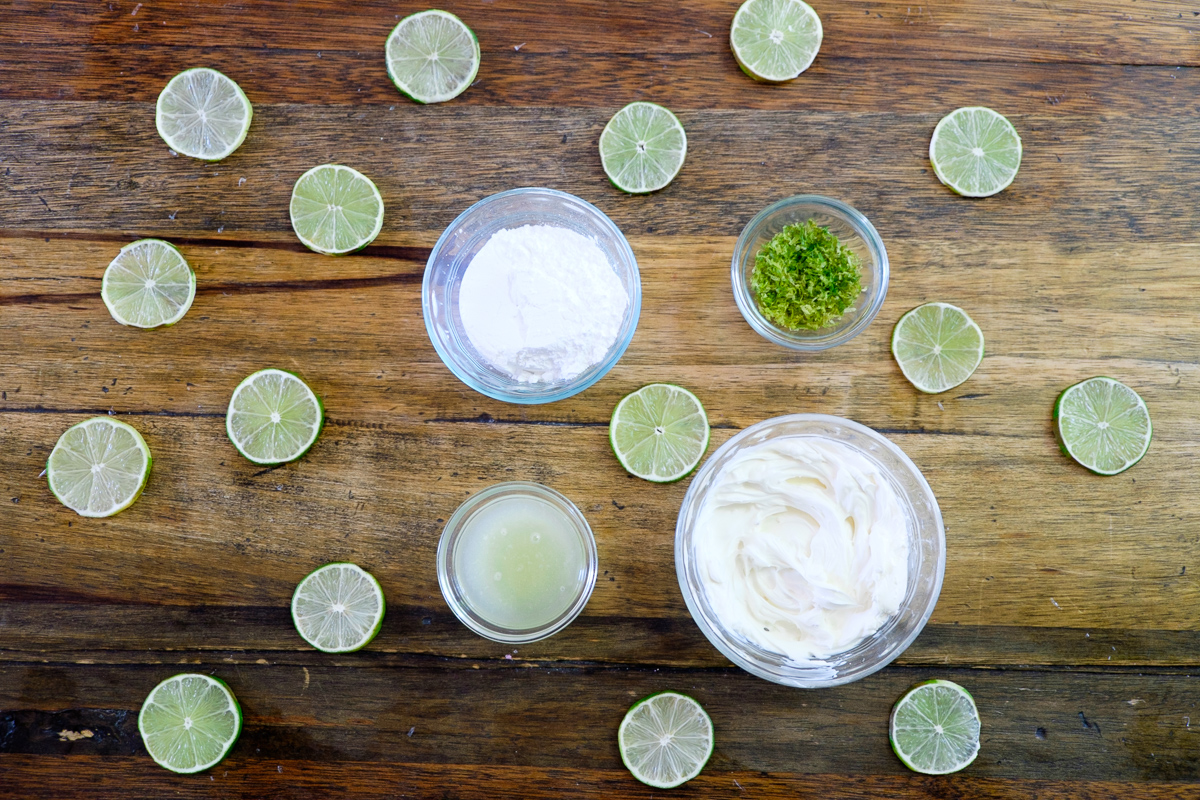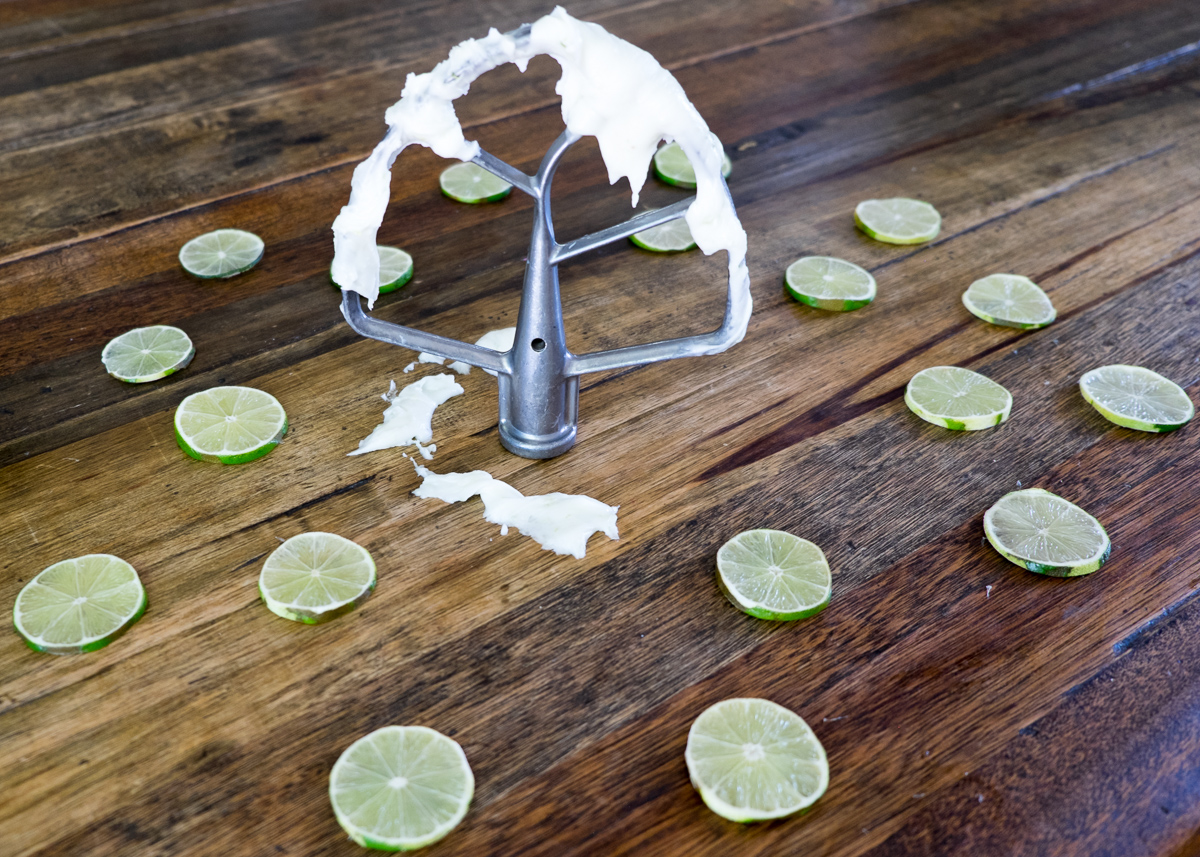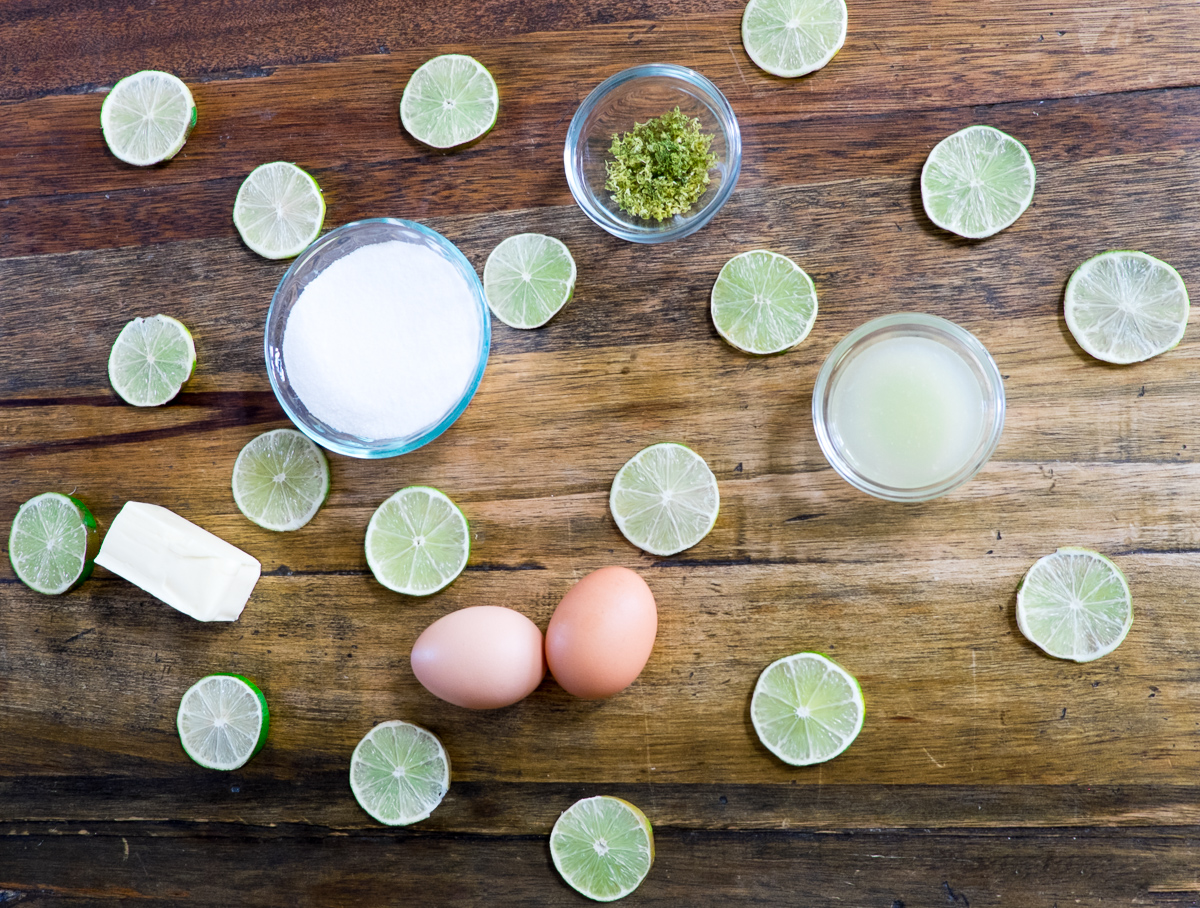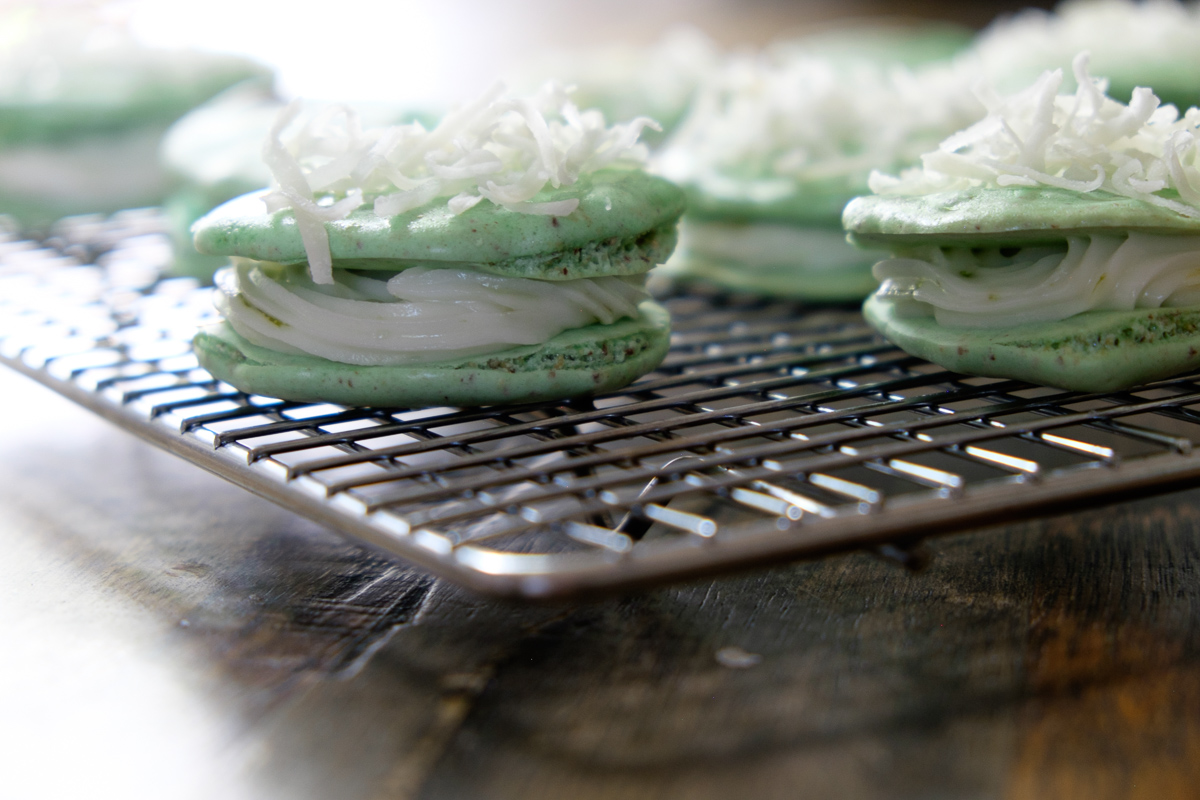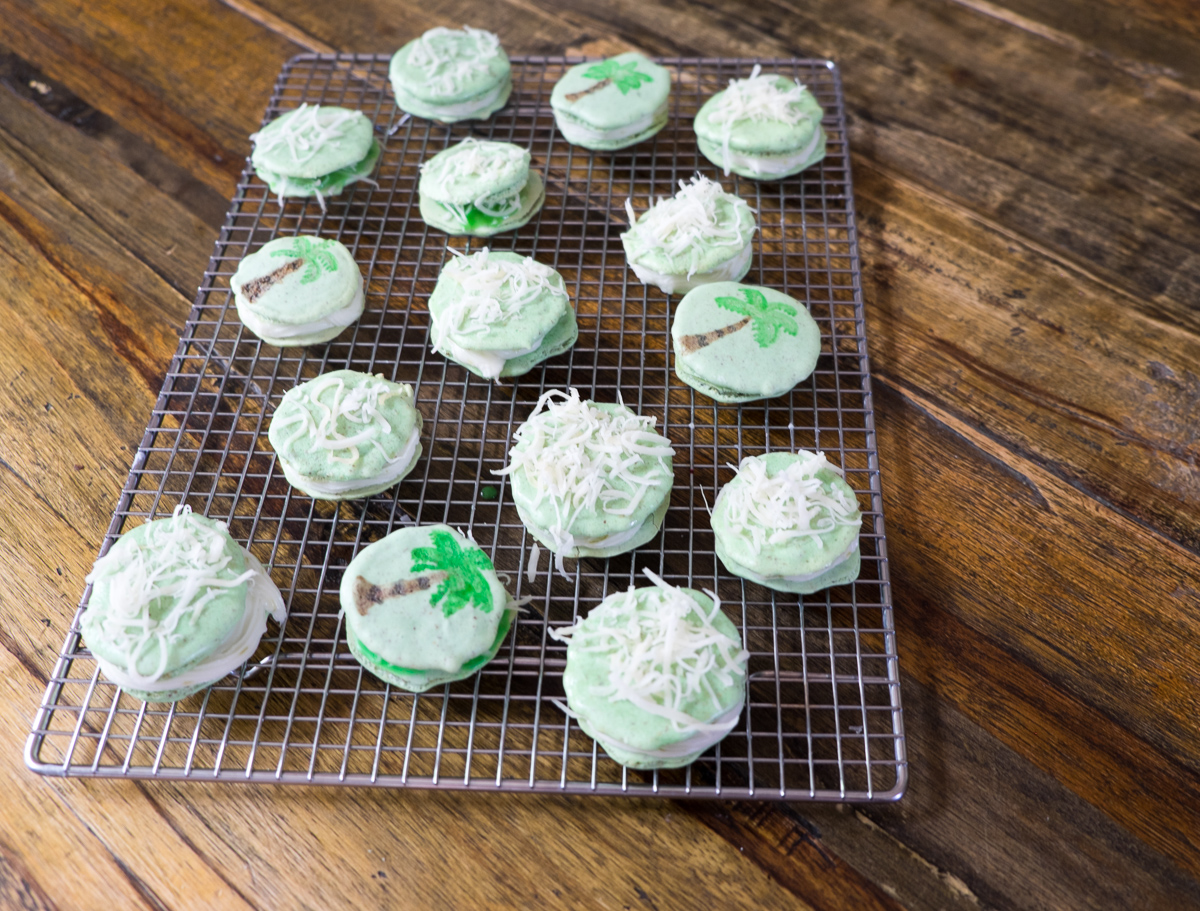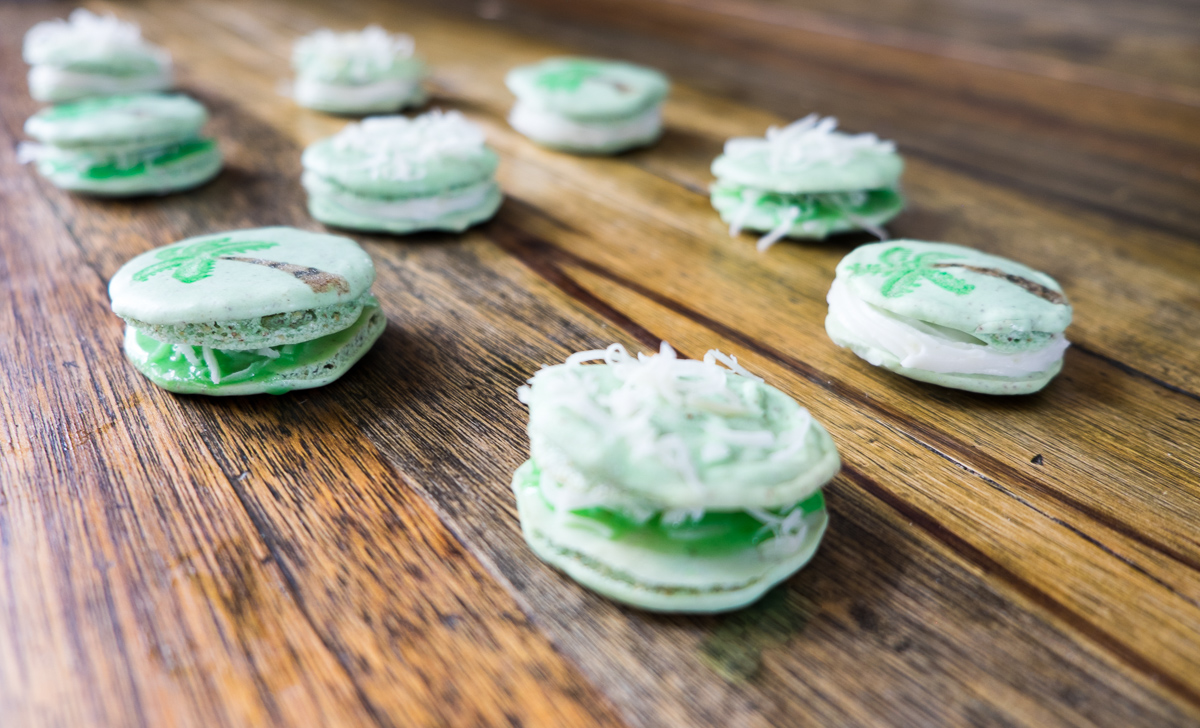Coconut Lime Meringues
Failure. It happens to the best of us.
This week, it happened to me. In the kitchen.
GASP. Yep. And you know what I did? I made the best of that shit.
Because what else are you gonna do?
This recipe began life as a macaron. It didn't end that way. Despite long hours of pouring over online resources and three abysmal attempts, I arrived here. At making do with flat-footed macarons.
You know what we call flat-footed macarons?
We call them meringues. And we get on with our fucking day.
I had grand plans for this recipe. I was dying to create that perfect tropical combination. The one that reminds you of turquoise waters and miles of white sand. You know how it goes. Come on. Sing with me.
You put the lime in the coconut,
You drink 'em bot' together
Put the lime in the coconut and you'll feel better
Put the lime in the coconut, drink 'em bot' up
Put the lime in the coconut and call me in the morning
I'll tell you what friends, we got the taste right on this one. Light and full of bursts of citrus and creamy coconut. So what if my macaroons didn't turn out picture perfect? They were still that airy, melt in your mouth profile that only meringue cookies can pull off. One day, I'll take my aspirations of making macarons off the shelf and have another go. Until then, making due with these coconut lime meringues doesn't seem like much of a hardship.
We begin with an ingredient role call, a meringue menagerie that includes almond meal, ground together with powdered sugar.
Now, we start to whip things into shape, starting with a whole lotta egg whites. This is a long process people. You add some sugar and after your first round of agitation, your meringue should look like this.
See how it's just hanging out inside that hollow, as if frightened to leave the comfortable confines of the whisk?
No soft peaks here. We're going for stiff, baby.
Once you finish folding in the flour and any extracts or coloring, you ought to get something that resembles this consistency.
Like you gave your meringue a mohawk. Don't worry. All that bedhead is completely normal. Next, you're going to pipe these beauties onto a baking sheet. Then bake for 15-18 minutes. After banging them against the counter and letting them dry out for a bit. Whatever. Mine came out like this.
As I said, I tried various recipes and methods all over the internets. These are the ones that come out somewhat salvageable. They have a bit of rise, as if they're trying to fly by standing on their tiptoes and holding onto a balloon. They're meringues that never quite got off the ground.
I did what I always do when faced with a failure in the kitchen. Cover it with frosting.
Hey, that shit works. I have made perfectly terrible cakes look passable with a few gallons of buttercream. Oh, that half a layer that got left behind in the pan? Nothing a little frosting can't fix.
To add some color and contrast to these meringues, I decided to concoct a batch of lime curd. Like lemon curd but limier.
And then I had a sudden inspiration.
Meringues make miraculous little canvases and absorb color and a bit of water without wilting.
So I got out my paintbrush and some food coloring to make our meringues the pretty picture they were supposed to be.
You're probably thinking that effort was excruciating. It wasn't. It was just a few dabs and done. Palm trees are pretty simple shapes. And they elevated my flat-footed failures into something spectacular.
The extra minute I spent on each cookie? Worth it.
I ended up sandwiching about half the meringues with lime buttercream, then wetting their tops and sprinkling the meringues with coconut. I took the rest of the batch and sandwiched them with the lime curd and some toasted coconut for contrast.
For a failure, these ended up fantastic. And in terms of taste, I have zero complaints. Sweetness that melts on your tongue and gives way to the fragrance of coconut with a bite of lime.
If I was stranded on a deserted island, I'd pick these flawed meringues as the perfect companions.
Until next time friends, keep putting the lime in the coconut. Mix it all together. If you put the lime in the coconut, I'm pretty sure it makes everything better.
Coconut Lime Meringues
For the meringues (from Pop Sugar):
2/3 cup almond meal or ground almonds
1 1/2 cups powdered sugar
3 large egg whites, room temperature and preferably aged up to 3 days
5 tablespoons granulated sugar
1 teaspoon vanilla extract
For the lime buttercream (from Sweat Peas and Saffron):
8 oz cream cheese, softened
½ cup powdered sugar
zest of 3 key limes
juice of 2 key limes
For the lime curd (from Alaska From Scratch):
3 eggs
3/4 cup sugar
1/4 cup key lime juice, freshly squeezed
1 teaspoon key lime zest
1 tiny drop Wilton Leaf Green food coloring gel (optional)
4 tablespoons butter
Directions:
Preheat the oven to 280ºF, and position 2 racks in the lower section of the oven. Line 2 rimmed baking sheets with parchment paper. If you have time, draw 1-inch circles on the back of each sheet, spacing the circles at least 1/2-inch apart.
If your almond meal is very coarse, grind it with the powdered sugar in a food processor until fine. Sift the almond meal-powdered sugar mixture twice through a mesh sieve.
Place egg whites in the bowl of a stand mixer (or use a hand mixer), and begin to beat on medium-high. When the eggs are frothy, gradually add granulated sugar 1 tablespoon at a time until fully incorporated. Continue to beat the egg white mixture until glossy and stiff peaks form when you lift the beaters. Gently stir in the vanilla extract. Be careful to not over beat the meringue (e.g., the meringue takes on a clumpy texture).
Add half of the sifted almond mixture, and gently fold it into the meringue using a flexible silicone spatula. Lift from the bottom, up around the sides, and toward the middle, being careful to not over agitate the meringue and lose too much air. Once the almond mixture is predominantly incorporated, add the second half and repeat the folding motion.
When the almond mixture is just incorporated, you will need to transform the batter into the appropriate texture. Using the flat of the spatula, "punch" down into the center of the batter, then scrape more batter from the sides to the center, and punch again. You will need to repeat this 10-15 times (or more, depending on your arm strength and the beginning texture of your batter) until the batter slowly and continuously drips back into the bowl when you scoop it up with the spatula. Think of the consistency of molten lava. For the best results, punch the batter a few times, check the consistency, then punch a few more times, etc. Do not make the batter too runny or the macarons won't rise as they should, and you could end up with oil stains on the surface.
Pour batter into a pastry bag fitted with a 0.4-inch tip. In a pinch, you can also use a gallon-size Ziploc bag: just snip a teeny bit from one of the bottom corners. Twist and clip the top of the bag to avoid overflow. On your prepared baking sheets, pipe out 1-inch rounds in the circles you drew (remember to draw the circles on the back side of your parchment to avoid ink or pencil stains on your macarons!).
Holding the baking sheet in both hands, rap each baking sheet firmly on the counter two or three times. This smooths out the tops and helps form the "pied" or frilly foot on the bottoms of the macarons. Allow the piped macarons to dry, uncovered, for at least 15 minutes. The macarons should form a very thin, smooth crust where, if you tap it lightly with your finger, the batter will not stick to your finger. If after 15 minutes, the batter is still sticky, let it dry longer. This may take up to an hour on humid days.
Place both baking sheets in the oven and bake for 15-18 minutes. After the first 2 minutes, open the oven to allow any excess humidity to escape. Halfway through, swap oven racks and rotate the sheets for even baking. The macarons are done when they are baked all the way through and the shells are just hard. Take care to not under bake (insides will still be mushy) or overbake (tops will begin to brown). Remove them from the oven, and cool on baking sheet placed on a wire rack.
When fully cooled, assemble the macarons with your choice of filling. The assembled macarons can be stored in an airtight container in the refrigerator for up to one week.
For the Lime Buttercream:
Beat cream cheese with a stand or hand mixer until completely smooth. Add the powdered sugar and mix until completely incorporated.
Add the lime juice and zest and mix. Taste and adjust lime if desired.
For the Lime Curd:
In a saucepan, whisk together the eggs and sugar until well combined. Whisk in the key lime juice, zest, and gel food coloring (I used the tiniest tip of a toothpick of gel, just to give the curd a subtle green tint. Completely optional. If you don't use, the curd will be a creamy yellow with flecks of green from the zest).
Turn the heat on to medium low and stir the mixture briskly and constantly until warmed through. Add the butter a little at a time until it melts into the mixture and becomes smooth. Continue cooking and stirring until the curd begins to thicken and coat the spoon. Pour the curd through a fine mesh sieve to strain. Pour curd into a jar or other tightly sealed container and refrigerate up to two weeks.
To Assemble & Decorate:
Pipe frosting onto half the cookies, sandwich with another cookie. Brush the tops with warm water and sprinkle with toasted coconut. Alternatively, you can slather a cookie with lime curd, sprinkle with coconut, and top with another cookie. Instead of coconut dusted tops, you can paint designs on your meringues with a simple small paintbrush and some watered down food coloring. The possibilities for these pictures of imperfection are endless.


